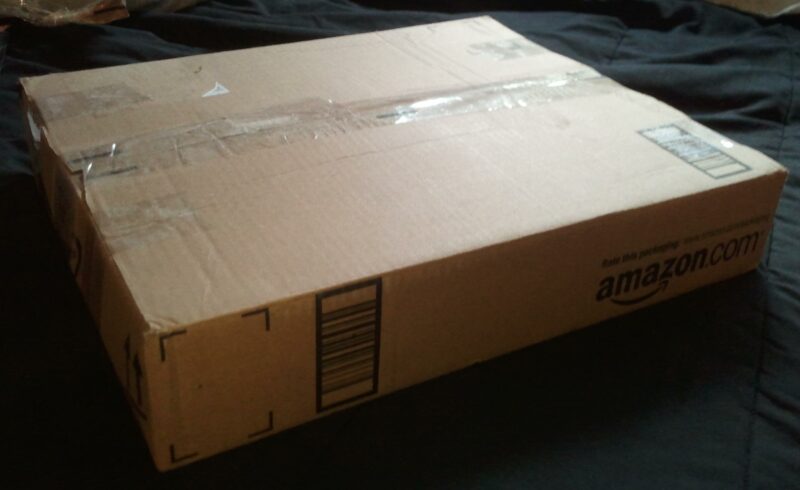Snow White and the Seven Dwarfs Movie Poster # 3 FRAMED Dopey Sleepy
$74.99
Description
Snow White and the Seven Dwarfs is a 1937 American animated film produced by Walt Disney Productions and released by RKO Radio Pictures. Based on the German fairy tale by the Brothers Grimm, it is the first full-length cel animated feature film and the earliest in the Walt Disney Animated Classics series. The story was adapted by storyboard artists Dorothy Ann Blank, Richard Creedon, Merrill De Maris, Otto Englander, Earl Hurd, Dick Rickard, Ted Sears and Webb Smith. David Hand was the supervising director, while William Cottrell, Wilfred Jackson, Larry Morey, Perce Pearce, and Ben Sharpsteen directed the film’s individual sequences.
Snow White premiered at the Carthay Circle Theatre on December 21, 1937, followed by a nationwide release on February 4, 1938, and with international earnings of $8 million during its initial release briefly assumed the record of highest grossing sound film at the time. The popularity of the film has led to it being re-released theatrically many times, until its home video release in the 1990s. Adjusted for inflation, it is one of the top ten performers at the North American box office.
At the 11th Academy Awards, Walt Disney was awarded an honorary Oscar, and the film was nominated for Best Musical Score. It was added to the United States National Film Registry in 1989 and is ranked in the American Film Institute’s list of the 100 greatest American films, who also named the film as the greatest American animated film of all time in 2008. Disney’s take on the fairytale has had a huge cultural impact, resulting in popular theme park attractions, a video game, and a Broadway musical.
The cottage belongs to seven adult dwarfs, named Doc, Grumpy, Happy, Sleepy, Bashful, Sneezy, and Dopey, who work in a nearby mine. Returning home, they are alarmed to find their cottage clean and suspect that an intruder has invaded their home. The dwarfs find Snow White upstairs, asleep across three of their beds. Snow White awakes to find the dwarfs at her bedside and introduces herself, and all of the dwarfs eventually welcome her into their home after they learn she can cook and clean beautifully. Snow White keeps house for the dwarfs while they mine for jewels during the day, and at night they all sing, play music and dance.
The cottage belongs to seven adult dwarfs, named Doc, Grumpy, Happy, Sleepy, Bashful, Sneezy, and Dopey, who work in a nearby mine. Returning home, they are alarmed to find their cottage clean and suspect that an intruder has invaded their home. Roy Atwell as Doc: The leader of the seven dwarfs, Doc wears glasses and often mixes up his words. Pinto Colvig as Grumpy: Grumpy initially disapproves of Snow White’s presence in the dwarfs’ home, but later warns her of the threat posed by the Queen and rushes to her aid upon realizing that she is in danger, leading the charge himself. He has the biggest nose of the dwarfs, and is frequently seen with one eye shut. Otis Harlan as Happy: Happy is the joyous dwarf and is usually portrayed laughing. Pinto Colvig as Sleepy: Sleepy is always tired and appears laconic in most situations. Sterling Holloway, who would later voice many other characters for Disney films was considered to voice Sleepy by Walt Disney. Scotty Mattraw as Bashful: Bashful is the shyest of the dwarfs, and is often embarrassed by the presence of any attention directed at him. Billy Gilbert as Sneezy: Sneezy’s name is earned by his extraordinarily powerful sneezes (caused by hay fever), which are seen blowing even the heaviest of objects across a room. Eddie Collins as Dopey (vocal effects and live-action reference only): Dopey is the only dwarf who does not have a beard. He is clumsy and mute, with Happy explaining that he has simply “never tried” to speak. In the movie’s trailer, Walt Disney describes Dopey as “nice, but sort of silly”.
As Disney had stated at the very beginning of the project, the main attraction of the story for him was the Seven Dwarfs, and their possibilities for “screwiness” and “gags”; the three story meetings held in October and attended by Disney, Creedon, Larry Morey, Albert Hurter, Ted Sears and Pinto Colvig were dominated by such subjects. Walt Disney had suggested from the beginning that each of the dwarfs, whose names and personalities are not stated in the original fairy tale, could have individual personalities. The dwarfs names were chosen from a pool of about fifty potentials, including Jumpy, Deafy, Dizzey, Hickey, Wheezy, Baldy, Gabby, Nifty, Sniffy, Swift, Lazy, Puffy, Stuffy, Tubby, Shorty and Burpy. The seven finalists were chosen through a process of elimination. The leader of the dwarfs, required to be pompous, self-important and bumbling, was named Doc; others were named for their distinguishing character traits. At the end of the October story meetings, however, only Doc, Grumpy, Bashful, Sleepy and Happy of the final seven were named; at this point, Sneezy and Dopey were replaced by ‘Jumpy’ and an unnamed seventh dwarf. A meeting of November 16 resulted in another outline entitled ‘Dwarfs Discover Snowwhite’, which introduced the character of Dopey, who would ultimately prove to be the most successful and popular of the dwarf characterisations.
It had first been thought that the dwarfs would be the main focus of the story, and many sequences were written for the seven characters. However, at a certain point, it was decided that the main thrust of the story was provided by the relationship between the Queen and Snow White. For this reason, several sequences featuring the dwarfs were cut from the film. The first, which was animated in its entirety before being cut, showed Doc and Grumpy arguing about whether Snow White should stay with them. Another, also completely animated, would have shown the dwarfs eating soup noisily and messily; Snow White unsuccessfully attempts to teach them how to eat ‘like gentlemen’. A partially animated sequence involved the dwarfs holding a “lodge meeting” in which they try to think of a gift for Snow White; this was to be followed by the elaborate ‘bed building sequence’, in which the dwarfs and the forest animals construct and carve a bed for the princess. This also was cut, as it was thought to slow down the movement of the story.9 The soup-eating and bed-building sequences were animated by Ward Kimball, who was sufficiently discouraged by their removal to consider leaving the studio, however Disney persuaded him to stay by promoting him to supervising animator of Jiminy Cricket in his next feature Pinocchio (1940).
Snow White and the Seven Dwarfs was to be the first full-length cel animated feature in motion picture history, and as such Walt Disney had to fight to get the film produced. Both his brother and business partner Roy Disney and his wife Lillian attempted to talk him out of it, and the Hollywood movie industry referred to the film derisively as “Disney’s Folly” while it was in production. He had to mortgage his house to help finance the film’s production, which eventually ran up a total cost of $1,488,422.74, a massive sum for a feature film in 1937.
Snow White and the Seven Dwarfs premiered at the Carthay Circle Theatre on December 21, 1937, to a wildly receptive audience, many of whom were the same naysayers who dubbed the film “Disney’s Folly”. The film received a standing ovation at its completion from an audience that included Judy Garland and Marlene Dietrich. Six days later, Walt Disney and the seven dwarfs appeared on the cover of Time magazine. The New York Times said “Thank you very much, Mr. Disney”. Variety suggested that “so perfect is the illusion, so tender the romance and fantasy, so emotional are certain portions when the acting of the characters strikes a depth comparable to the sincerity of human players, that the film approaches real greatness.”
Following successful exclusive runs at Radio City Music Hall in New York City and a theater in Miami in January 1938, RKO Radio Pictures put the film into general release on February 4. It became a major box-office success, making four times more money than any other motion picture released in 1938. Snow White’s success led to Disney moving ahead with more feature-film productions. Walt Disney used much of the profits from Snow White and the Seven Dwarfs to finance a new $4.5 million studio in Burbank – the location on which The Walt Disney Studios is located to this day. Within two years, the studio completed Pinocchio and Fantasia, and had begun production on features such as Dumbo, Bambi, Alice in Wonderland and Peter Pan.
At the 11th Academy Awards, the film won an Academy Honorary Award for Walt Disney “as a significant screen innovation which has charmed millions and pioneered a great new entertainment field”. Disney received a full-size Oscar statuette and seven miniature ones, presented to him by 10-year-old child actress Shirley Temple. The film was also nominated for Best Musical Score.
Noted filmmakers such as Sergei Eisenstein and Charlie Chaplin praised Snow White and the Seven Dwarfs as a notable achievement in cinema; Eisenstein went so far as to call it the greatest film ever made.
This item may or may not show a tiny number on the image…please inspect the pictures carefully.
Frame is shrinkwrapped until time of purchase. Ships boxed with packing peanuts.
THE PERFECT GIFT!
Related products
-


Punisher Poster # 6 by Wieslaw Walkuski Born Frank Castle Origin Movie
$29.99 Add to cart -
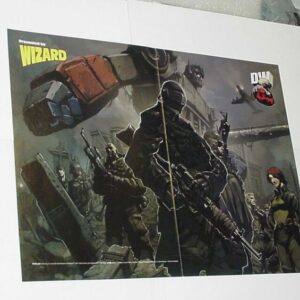
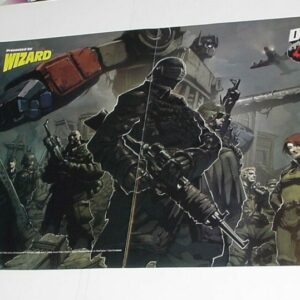
Transformers G.I. Joe Poster Pat Lee GI Optimus Prime Snake Eyes
$39.99 Add to cart -

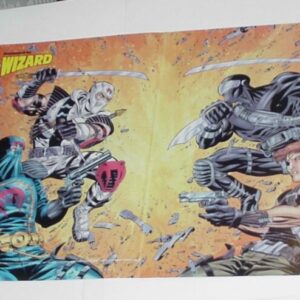
G.I. Joe Poster # 3 Cobra Commander Storm Shadow vs Snake Eyes and Billy by Mike Zeck
$34.99 Add to cart -
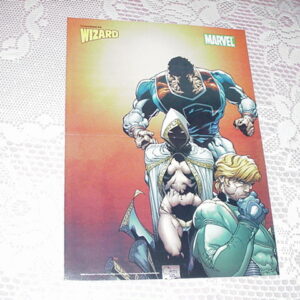
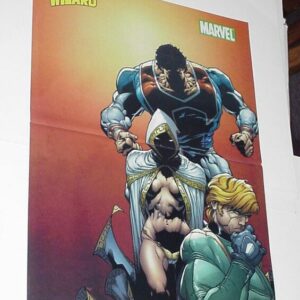
Supreme Power Poster # 1 Joe Quesada Hyperion Doctor Spectrum Squadron
$29.99 Add to cart






